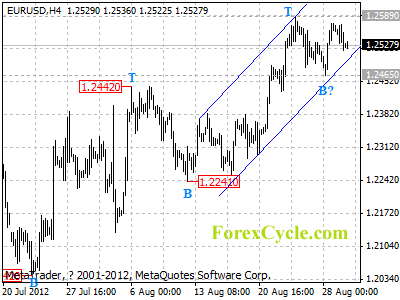You won’t read about it in the mainstream news, but the South African mining industry is in the fight of its life. That makes one investment a screaming buy.
You see, violent strikes have paralyzed several South African mines this year, including most recently the giant Lonmin platinum mine.
This isn’t a short-term problem, either, and it’s not related to conditions in the mining industry.
There’s a deep political agenda at play, which means the disputes are likely to be a severe ongoing problem.
But it’s the story behind the story that has my eye. Because for investors who can grasp what this crisis really means, the seeds of opportunity are about to take root.
Let me explain…
South Africa’s Mining Industry is a Political Football
In this case it has to do with politics, or more accurately, radical left-wing politics.
Even though it is a democracy, South Africa is effectively a one-party state. Since the opposition Democratic Alliance attracts voters primarily from the minority white and mixed-race communities, it has no real chance of dislodging the African National Congress from power.
What’s more, the country is very unequal, with one of the highest Gini (inequality) coefficients in the world.
These days however, it’s not just the whites who are rich. The ruling ANC bosses now have primarily business interests and are among the nation’s richest people. Meanwhile the economy grows only sluggishly and unemployment is a towering 25%.
As you might surmise, in this situation there’s a lot of unrest.
Caught in the middle is South Africa’s mining industry, which has been a political football for two years now.
But now a radical wing of the ANC is attempting to replace the current president, Jacob Zuma, in the next election.
That’s important because, in 2010 Julius Malema, then leader of the ANC Youth League and a leading radical, launched a political campaign to nationalize the mines.
Zuma opposes this, as does the official National Union of Mineworkers. And even though Malema was expelled from the ANC in February, a discussion document advocating mine nationalization was only narrowly defeated at the ANC Policy Congress in June.
Since then, Malema has taken his campaign to the streets, and has stirred up radical groups among the mineworkers to demand improved pay and conditions outside of the official union structure.
This mix of radical union leaders combining with extremist political agitators in a society of extreme inequality, where the majority population has memories of oppression, has an analogue in history…
And it’s not in Africa.
It’s reminiscent of Czarist Russia before the 1917 Revolution that let in the Bolsheviks. Malema is essentially Lenin or Trotsky (at least he’d like to be) and the miners’ union is the equivalent of the Petrograd Workers Soviet.
That suggests that these troubles won’t disappear anytime soon.
Whether or not Malema succeeds in overthrowing South Africa’s power structure (and the odds must still be against him), mine nationalization is very much a live issue, and industrial action by militant miners is a key tool for Malema’s supporters in their efforts to achieve radical change.
Here’s where the payoff is for investors…
Political Unrest Means a Steep Rise in Platinum Prices
It’s highly likely South African mine output will be heavily disrupted for several years to come – even if Malema’s objective of mine nationalization fails (and my bet would be that’s the one place where he will eventually succeed, as the current power structure adopts elements of his program to defuse opposition.)
Like a disruption of oil supplies through the Straits of Hormuz, disruption of South Africa’s output will raise prices of the commodities where it is an important producer.
Traditionally, this would have meant gold, but today South Africa is only a medium-scale gold producer, accounting for about 12% of world output.
However in platinum, South Africa accounts for 70% of world output, so even a halving of production over a prolonged period would bring a steep price rise.
Platinum is a key ingredient in automobile catalytic converters; it is also, along with gold, palladium and silver, one of the four precious metals for which a substantial investment demand exists.
Traditionally, it trades at a premium to gold, but in early August, before the latest outbreak of mine violence, platinum had been trading at a 17% discount to gold – the lowest relative level for 27 years.
Analysts see platinum primarily an industrial metal, citing the substantial inventories of the metal in existence, especially in Russia. But what they don’t realize is that those “inventories” are in many cases investment holdings, similar to those of gold or silver.
Regarded as a precious metal, platinum is now in imminent danger of shortage.
Like gold, it will benefit from the ultra-easy monetary policies of the Fed and the European Central Bank, both of which are expected to provide more fuel to the monetary fire next month.
However, it also has the potential to soar in price, even beyond gold, as supplies are restricted by South Africa’s politically-inspired industrial action.
For investors, that leaves one clear economic winner. Platinum is a screaming buy right here.
Martin Hutchinson
Contributing Editor, Money Morning
Publisher’s Note: This article originally appeared in Money Morning (USA)
From the Archives…
Read This Gold Price Warning Before You Buy Another Stock
24-08-2012 – Kris Sayce
Stocks Are Up – Is it a Good Time to Buy?
23-08-2012 – Kris Sayce
It’s About Freedom of Speech: What if We Couldn’t Write to You Anymore?
22-08-2012 – Kris Sayce
Things Are Looking Up for Gold
21-08-2012 – Bengt Saelensminde
The Good News About Europe’s Missing Pre-nup
20-08-2012 – Nick Hubble


